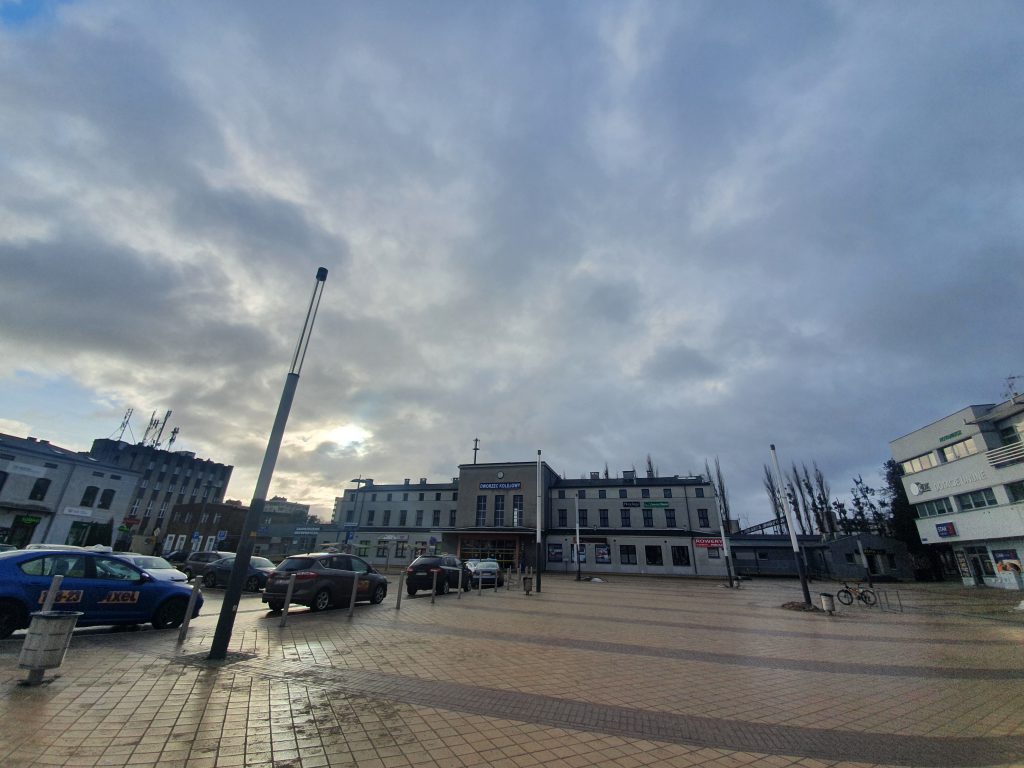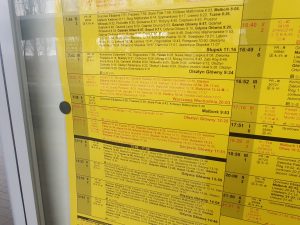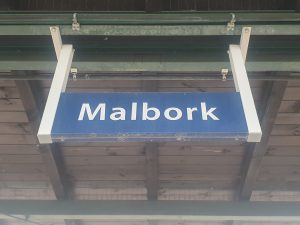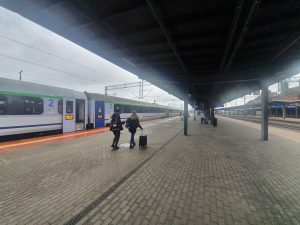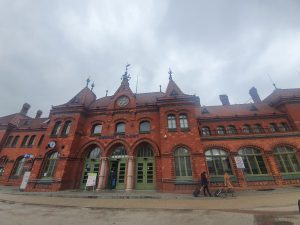PKP – Elbląg to Malbork
Back to Elbląg railway station, this time for the twenty minute journey into Malbork, which is another new town for me.
I didn’t look too much at this before, but it’s the grand hall at Elbląg railway station. There’s a little shop and waiting area to the left, with the ticket office on the right. I don’t buy tickets at the railway stations, it’s easier for me to do that on-line and just have the ticket on my phone.
Mine was the 11:17 train, but there were fewer trains than I expected leaving from the station, roughly one per hour.
Looking back at the station’s main hall from platform 2.
And on time, my train pulls into the station, with something like 12 carriages. It was busier than I expected, but it’s an Intercity service rather than a regional train. An elderly Polish lady barged me and two other passengers out of the way, before realising that her large bag was too big to fit by her seat, so she caused a queue of people to wait whilst she shuffled back along the carriage with her excessive luggage. That sort of behaviour is unusual in Poland, but I’d have waited for her to board anyway, I was unsure of her desperate rush.
The seat reservation system on Intercity trains has always been respected when I’ve been on Polish trains, something that the British system fails to achieve. The carriage was fairly full, but my seat was available without an issue. My ticket wasn’t checked, but there wasn’t much time for the staff to perform those checks given the short length of the journey. The view was mostly just countryside, this is a rural part of Poland, and unlike the regional trains, this Intercity train didn’t stop at the smaller railway stations en route.
The train arrived into Malbork two minutes early.
Rather wide platforms I thought…. The train fare to get here was £2 and everything ran as expected this time, unlike my journey to get to Elbląg.
It’s a cold day in Malbork, it’s something of a temperature shock to go from the warmth of the train to the cold surroundings of Poland in January. The very Germanic looking building was constructed in 1891 and it survived the Second World War, but only because the Polish authorities were able to save it from an arson attack led by the Red Army.
As an aside, the town (then known as Marienburg) voted in 1920 to join Eastern Prussia rather than Poland, so this was a German run railway station until the end of the Second World War. Although railway stations in Ireland were once operated by Great Britain before the country gained independence, this concept of places changing their names and being in different territories is still one that fascinates me, as it isn’t something I’ve needed to think about when in England for example.

